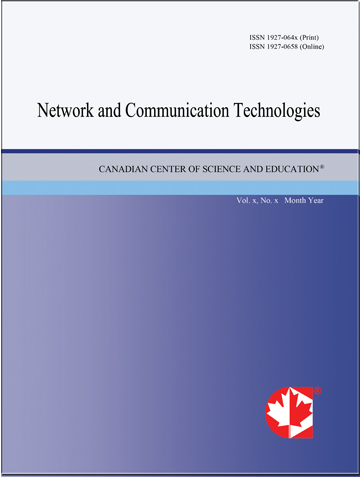Simulation of Rainfall Attenuation Prediction Models for the Optimization of High-Speed Links in Millimeter Bands (80GHz): Tropical Regions’ Case
- Patrick Dany Bavoua Kenfack
- Alphonse Binele Abana
- Emmanuel Tonye
- Paul-Salomon Ngohe-Ekam
- Linjouom Samira France
- Benjamin Tanga Louk
Abstract
We deal with the problem of attenuation of electromagnetic waves due to precipitation. Indeed, the millimeter wave frequency (30–300 GHz) is a promising candidate for broadband wireless networks (4G and beyond), but atmospheric elements limit radio links to this frequency band. Precipitation is the important atmospheric element that causes the attenuation of a wave during its propagation and should therefore be estimated for the proper functioning of a link. It is with this in mind that our study focuses on the choice of an appropriate model for predicting the attenuation of a radio link after simulation of several models proposed in the literature in order to assess the impact of precipitation in the tropical region. The method used to achieve this objective consists firstly of analysing existing models and determining theoretical and actual unavailability using ITU-R methods and the Nomad monitoring tool; then secondly, we develop an application to evaluate the attenuation due to rain using the Da Silva, Mello and ITU-R models. The calculated attenuations were compared to experimental measurements, and Da Silva's model was found to be the best fit. On a local level, these results have a significant impact on the planning and optimization of communications infrastructures, enabling better performance of networks using millimeter waves. At the national level, this contributes to improved telecommunications networks and more reliable connectivity. Globally, this research can aid the development of high-frequency wireless communications in tropical regions, thereby promoting large-scale technological and economic advancement.
- Full Text:
 PDF
PDF
- DOI:10.5539/nct.v9n1p1
Journal Metrics
(The data was calculated based on Google Scholar Citations)
1. Google-based Impact Factor (2021): 0.35
2. h-index (December 2021): 11
3. i10-index (December 2021): 11
4. h5-index (December 2021): N/A
5. h5-median (December 2021): N/A
Index
Contact
- Bruce LeeEditorial Assistant
- nct@ccsenet.org
